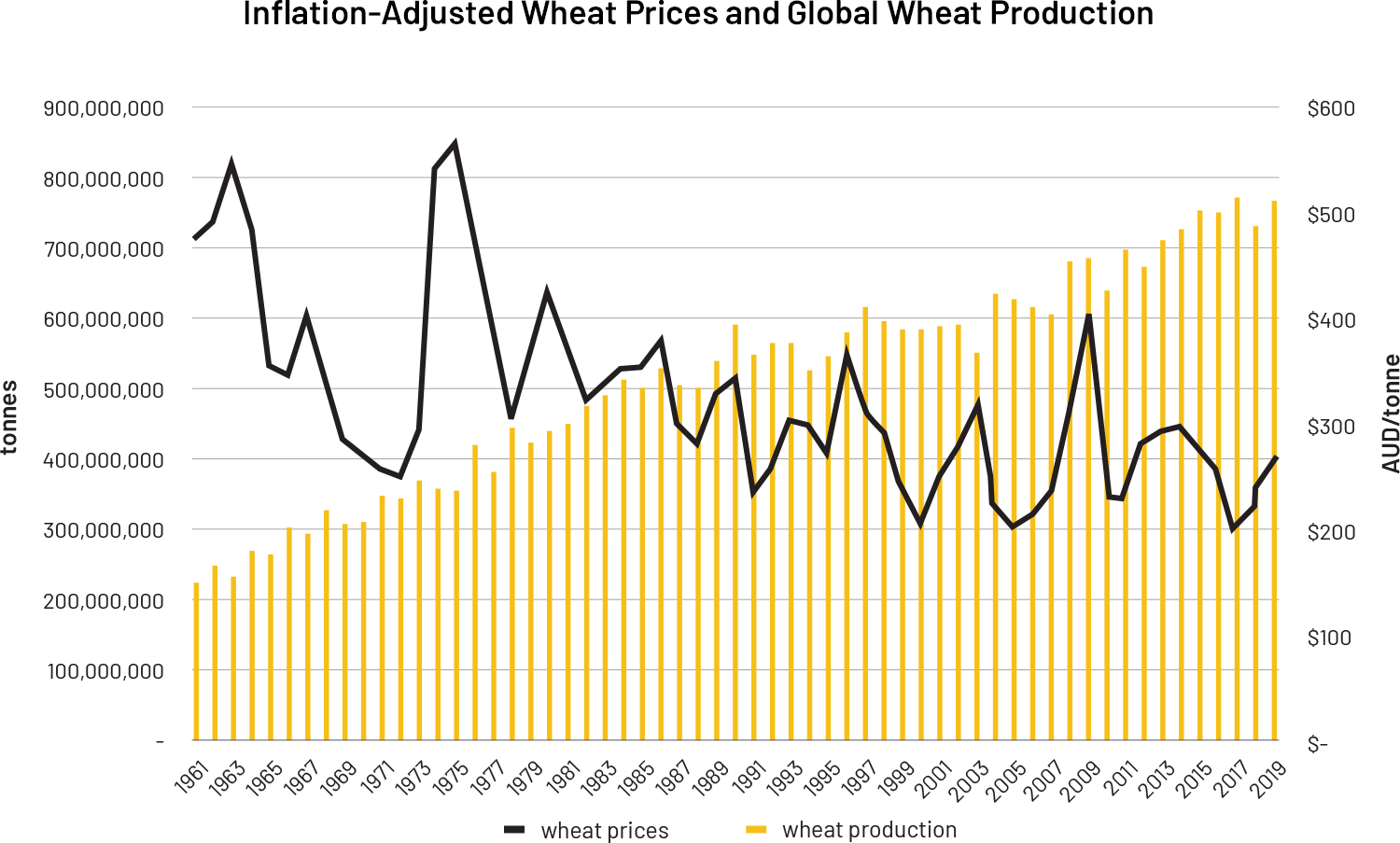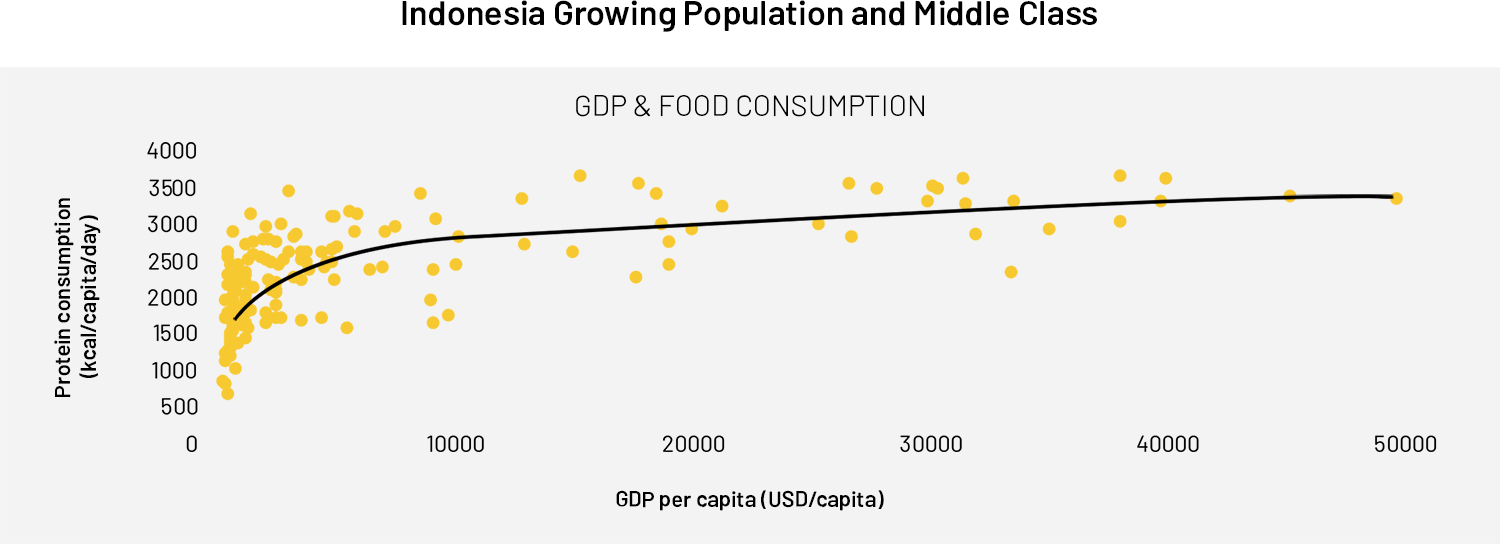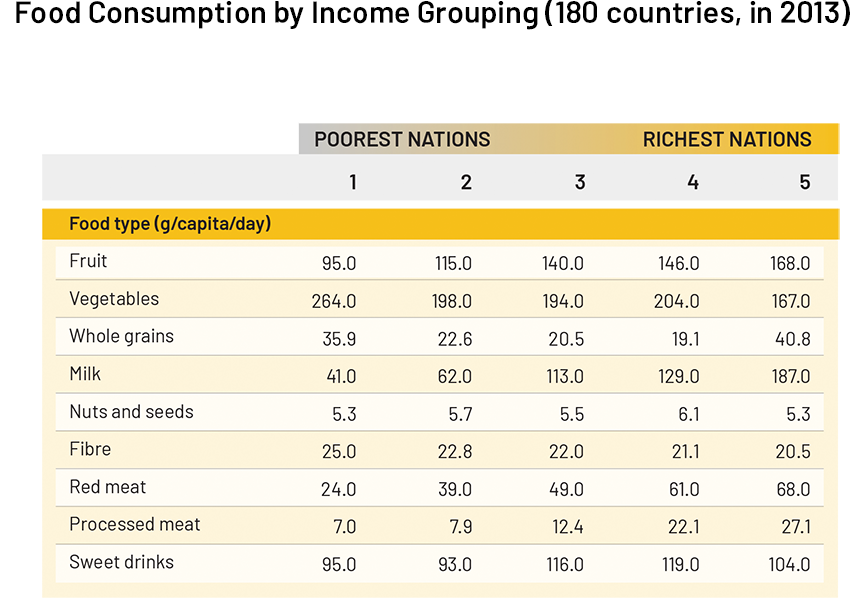Our investment rationale for long term performance of Australian farming is underpinned by three key drivers:
Capital Appreciation – aggregation and development of mispriced land
Earnings Growth – upside potential as agricultural commodities revert from inflation adjusted lows
Our People – ongoing commitment to achieving best-in-class management
The capital investment required to farmland exposure in Australia is far less than that of global comparatives, in both absolute terms and when adjusted for relative production.
The Company believes grain prices are at the bottom of the cycle, sitting near all-time low inflation adjusted prices. There are a number of catalysts which are anticipated to provide strong upward pressure on the commodities produced by Duxton Farms.



With global population growth and specifically a growth in the middle-class of developing nations, there is likely to be more demand for grain. One example is Indonesia; Indonesia’s middle class is anticipated to grow from 2 million people (2004) to 120 million by 2030, with over 60 million low-income Indonesian workers expected to join the middle class in the coming decade.
Duxton Farms is managed by a highly qualified on-farm team with extensive experience in the Australian broadacre farming industry.
References for this page:
- http://www.fao.org/faostat/en/#data/QC, https://www.ers.usda.gov/data-products/wheat-data/
- www.outline-world-map.com
- Kharas, H. 2010, Working Paper No. 285: ‘The emerging middle class in developing countries,’ OECD Development Centre
- Macquarie Agricultural Funds Management; The case for investing in agriculture
- Masters, 2016
- 2009, www.outline-world-map.com // Kharas, H. 2010, Working Paper No. 285: ‘The emerging middle class in developing countries,’ OECD Development Centre
- https://data.worldbank.org/indicator/AG.LND.ARBL.HA.PC
- 2018 Savill’s report, which uses 2016 data: https://www.savills.co.uk/research_articles/229130/226831-0
- Transparency international http://www.fao.org/faostat/en/#rankings/countries_by_commodity // http://www.fao.org/faostat/en/#data/QC
- GRDC: https://grdc.com.au/resources-and-publications/grdc-update-papers/tab-content/grdc-update-papers/2018/03/australian-wheat-production-compares-well-to-global-competitors-an-international-benchmarking-comparison
